Montessori Philosophy
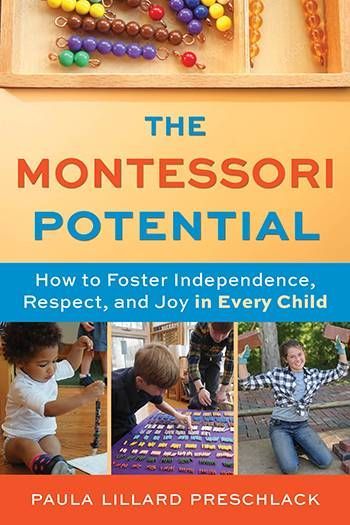
Our former Head of School Paula Lillard Preschlack says with a laugh that her older sister Lynn Lillard Jessen convinced her to begin her Montessori journey by enticing her with bowls of ice cream and asking her, “What else are you going to do?!” More than twenty-five years later, we can all be grateful that Paula didn’t choose something else to do! Paula spent almost three decades taking three Montessori trainings, teaching at the Primary and Elementary age level, leading Forest Bluff School as a Head of School, raising her own two children in a Montessori home, working with parents, reading countless books on development and Maria Montessori, and continuing her own education through conferences and conversation with other educational, developmental, and Montessori experts. She also continued to write and give talks in order to share this information, as well as her knowledge and observations, with this special community. After twenty-five years at Forest Bluff, Paula has moved to the next chapter of her life, writing a book on what she learned about Montessori in action. On February 7, her book “The Montessori Potential: How to Foster Independence, Respect, and Joy in Every Child” will be released to the public! This book is a culmination of her work so far, not only sharing the theory of Montessori, but offering lively anecdotes and engaging conversation that bring the theory to life. Her book serves as more than just an explanation of the Montessori curriculum. In it, she describes how it actually works, with examples from real classrooms, and what triumphs and struggles schools face every day as they implement this approach. Her insights into Montessori’s practical application are invaluable. It is a call to action for parents, teachers, administrators, policy makers, and all interested community members. Paula shares, “This book is for educators, reformers, concerned citizens, and parents, who want to learn how to recognize authentic Montessori education and to learn how—exactly—the approach works so well for children.” Paula’s book walks the reader through the essentials of the Montessori framework, what an ideal Montessori school looks like, why authentic Montessori matters and what challenges it faces, how Montessori is integrated into public schools, and what Montessori looks like for parents at home. Her entertaining stories about real life students and teachers make these important points accessible and memorable. Order Paula’s book anywhere where you buy books, and join her for a virtual book launch on February 7 and for a book signing at Gorton Community Center with Lake Forest Book Store in Lake Forest, IL, on April 28 from 5-7pm. Check her website for virtual and in-person speaking events across the country this year, or contact her to speak at your school or community! Paula’s book plays an important role in bringing the potential of a Montessori education to the greater world. Nora Flood, the Education Lead at Wend Collective, writes, “This is the most comprehensive book I have read that illustrates the history of, framework for, and power of the Montessori approach. Preschlack’s writing has helped me understand, and in turn articulate, why every child deserves a Montessori education!” Michael G. Thompson, coauthor of Raising Cain and The Pressured Child , writes, "In her passionate and beautifully written new book, Paula Lillard Preschlack explores not only the potential of the Montessori approach but also the potential of children to grow into fully engaged and joyous learners. In a time when we see children as fragile and in constant need of our anxious supervision, Preschlack sees them as independent, adaptable, and resilient. Educators and parents and politicians need to read The Montessori Potential to remind themselves of what children can do if we create learning environments for them that unlock their strengths." Links Order your book from The Lake Forest Book Store or Amazon Virtual book launch Gorton book event (sign up for her newsletter for a free invitation) Interview with Julia Volkman of Maitri Learning Paula’s website Paula’s Soundcloud site for a variety of talks Newsletter for educators
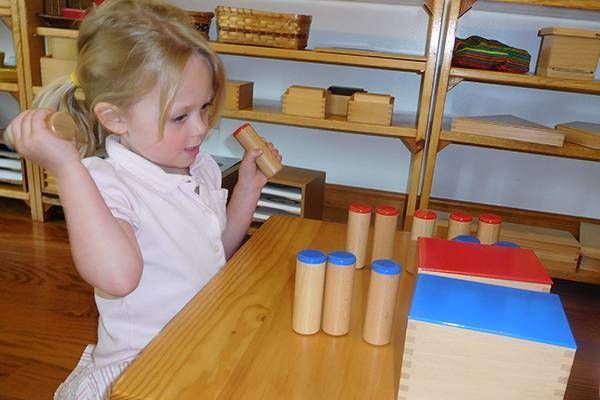
What Do Children Do with Montessori’s Sensorial Materials? Imagine you are watching a four-year-old boy carry a wooden box with a red lid to a table. Then, he goes back to the shelf of Sensorial Materials and brings over a matching box—this one with a blue lid. (These are called the Sound Cylinders. Each is filled with about one ounce of grains of sand ranging from very fine to coarse, in subtle gradations so that each cylinder makes slightly different sounds when shaken). The boy removes each lid and slides them underneath each corresponding box. He carefully lifts eight wooden cylinders out of the boxes and lines them up in front of each box: the ones with blue tops in front of the blue-lidded box and the ones with reds tops in front of the red-lidded box. He mixes these identical red and blue topped cylinders around, and then lines them up again by color in two columns. He is now organized and ready to begin the game. He lifts a red-topped cylinder with his left hand and shakes it by his left ear. He then lifts the first blue-topped cylinder with his right hand and shakes it by his right ear; back and forth, he compares the sounds. He decides that they do not match, so he places the blue-topped cylinder in the back of the row of “blue cylinders” and moves on to the second blue-topped cylinder. He does this until he finds one that sounds the same and places this pair in a new column. He does this with all the cylinders until he has a double column of matching pairs. He checks them one more time, comparing carefully, his eyes soft as he focuses all his attention on the very faint sounds. When he determines he is correct, he mixes them up, deciding he wants to do it again. After the second time through, he puts the materials back on the shelf and moves on to another activity. This game introduces this young boy to a systematic way to compare qualities and keep the choices already tested in logical order. It gives him an option when he wants to compare other things in life and familiarizes him with an organized way to do math problems or eliminate options when looking for an answer to a “problem” of any kind. Equally important, it helps children to refine their sense of hearing and their capacity for concentration through an entire process. As a bonus, little children think such games are very fun! They love the challenge and the sensorial exploration. What Characteristics Identify Montessori’s Materials? There are certain qualities that Dr. Montessori’s Sensorial Materials share. They each isolate a sense or quality to bring the child’s attention to it. There is only one of each material to eliminate confusion. And by “…removing as far as possible all distracting factors…[this] enables the child to engage in an inner and external analysis that can help him to acquire an orderly mind” (Maria Montessori, The Discovery of The Child). Each sensorial material is: A materialized abstraction Progresses from general to specific From familiar to the unfamiliar Involves physical movement Isolates a difficulty Is limited in certain ways so that it draws in the child’s focus Serves as indirect preparation for something else (learning to read, write, or do arithmetic) Contains an inbuilt control of error Provides a key to the world Has a specified place in a sequence of presentations Arguably the most exciting thing about the Sensorial Materials are the games that the teacher teaches the children to play with them. There are matching games (where we connect two items with identical qualities), grading games (where we put objects or qualities in an order based on gradation of that quality), and language games (where we name, and sometimes label, qualities as we discover them). The games are very important because they help children exercise and further develop their memory-building capacities. When we build memorizing techniques in a game-like fashion, we get better at memorizing information and are better able to hold foundational facts in our minds. Here’s a surprise for you: Montessori children are not more intelligent; they’ve just received many more opportunities to develop their minds than children typically get in other educational settings. The games we play with the Sensorial Materials every day is one of the key ways this happens. What A Wonderful World! The knowledge the children gain through this specialized set of Montessori materials relates directly to their experience of the world around them. Children have a repertoire of categorized information at their fingertips and the language to identify and name their experiences in the world: “This is hot. This is cool. This is cold. This is tepid.” “This feels rough. This feels smooth.” “This is heavy. This one is heavier. This is long, that is longer, this other one is the longest.” “This is sour. This is sweet. This is bitter.” “That is loud. This is louder.” And even more specifically: “This is Poland. This is Mexico. This is Bhutan.” “This is the flag of Iraq.” “This is an obovate leaf. That one is hastate.” “This is a pentagon. That is a hexagon.” “That is lavender. This is fuchsia.” “This musical note is a C. This note is an F.”
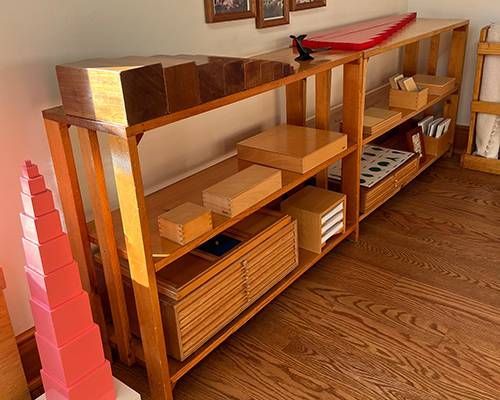
Why Are Montessori’s Sensorial Materials Important for Children? Great question! We all recognize those beautiful wooden prisms and the pink tower of cubes as being Montessori’s distinct materials for children’s development. The glossy red rods and the blocks with rows of tiny wooden knobs are intriguing. They seem to call out to be touched and handled. But there is so much more to this special set of 25 Sensorial Materials than their beauty; they are instrumental to children’s individualized educations, as students and as human beings. The Sensitive Periods There are distinct periods of human development through which every young child passes by the time they are five years old. These sensitive periods make children especially attuned to a particular physical sense, and to concentrate on it almost to the exclusion of all others. This happens for every child but can be hard to recognize if adults are not paying attention to their children’s behaviors or providing opportunities for children to explore these aspects of their surroundings. For a young child, the world is a jumbled mass of impressions. He or she arrives on Earth with no knowledge, but with a gift of five senses—touch, taste, smell, hearing and sight—and the urge to explore through them. To help each child make sense of this world, education must offer a way to organize and label the chaos that they encounter every day. The orderly Sensorial Materials do just this. As a child learns from working with Montessori’s Sensorial Materials in the classroom, he or she goes back out into the world and delights in naming qualities and recognizing forms all around them; it is as if she sees color for the first time now that she knows what it is, what it is called, and where it belongs in the order of things. Imagine what a joy this revelation is for a child! The Sensorial Materials are foundational to Montessori education. Dr. Montessori’s journey as an educator began, in fact, with sensorial materials. Maria Montessori’s first professional task as a physician was to attend to the physical and mental wellbeing of young children in a psychiatric asylum. She learned so much about human development by working with these children with issues ranging from physical disabilities to psychological disturbances. Unfortunately, in the early 1900s in Europe, it was customary to segregate such individuals from society and lock them into a room with nothing to do. Montessori’s heart went out to these children. The first thing she noticed by observing them was the intense need for sensorial stimulation to feed not only their bodies, but their minds. Nature drives us to touch and handle objects from early ages in an effort to understand the world and develop the connections between our bodies and our minds—between movement and thinking. In this way, human beings identify and name the qualities of the world—color, scents, sounds, etc. Everything has a relationship to all else, a place in a set of qualities, and a name we attach to it. Dr. Montessori realized, “The child is by his nature an avid explorer of his surroundings because he has not yet had the times or means of knowing them precisely” ( The Discovery of the Child ). She recognized that we can help children to acquire this knowledge in an organized fashion. As Dr. Montessori experimented systematically in showing children her first materials, she found that they were drawn to them and wanted to repeat their activities until they mastered each one. The children, she realized, were educating themselves through their use of these precise materials. They were serving a fervent need. By combining her discoveries with studies of other doctors’ and scientists’ work, Maria Montessori designed and experimented with sensorial materials that would inform children about the qualities of the real world. To this day, her Sensorial Materials brilliantly support children to explore and learn the language for identifying differentiating qualities of color, temperature, size, weight, length, height, and spatial equalities. They enable children to train and practice their hand-eye coordination, decision making ability, discernment between details, and organization of information. The sensorial materials help children to build their unique, organized minds. Which Ones Are The Sensorial Materials and What Does Each Address? Below is a basic list of Dr. Montessori’s Sensorial Materials and the qualities children explore with them, which you will find in any AMI-accredited Primary classroom for children ages 3 to 6 years old. Form and Dimension Form and dimension are explored in the visual sense with: The Solid Cylinders The Brown Stair The Pink Tower The Red Rods The Knobless Cylinders
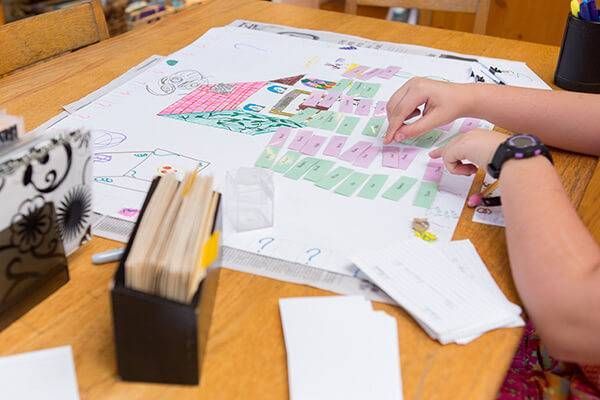
Submitted by Laura Earls, with edits and contributions by Margaret Kelley In a Montessori classroom, experiences with art, culture, and nature are embedded in the curriculum. Instead of viewing these parts of life solely as separate categories for study, Dr. Montessori believed that they were also inherently intertwined with the children’s daily lessons and work. So much of a human being’s relationship to art, culture, and nature is simply a relationship to beauty. Children who learn in a Montessori environment come to see beauty everywhere—both as something to create, as well as something to appreciate. This ability serves them throughout life, deepening their relationship with art, culture, and the natural world. As teachers, we make sure to celebrate true beauty—encouraging it and elevating it in all aspects of the classroom. By showing the children how to create it through their work, how to appreciate it in the world around them, and how to engage with it in nature and culture, we give them a map for incorporating it into their lives as they venture outside of the classroom. These lessons provide children with a foundation for always appreciating the beauty they find around them, both manmade and natural—giving their lives meaning, and making the world a precious and cherished place to live. Art Making Work Beautiful A Montessori teacher helps their students to strive for beauty in their work. There are distinct art lessons, but there is also the practice of making academic projects beautiful. When children bring their work home, parents may notice that no single sheet of paper is left plain! Once a child completes a piece of paper in any subject, they may decorate their work. Ornamentation on their finished reports is a lovely way for them to feel that their work is special and very much their own.

For those of us in the Midwest, June brings the beginning of summer. This means longer days, unstructured time, sunshine, green leaves, and flowers! Summer is so good for us after the gray skies of winter, but sometimes all that free time can create stress for families. What should we do with our unscheduled days?! What are some Montessori summer activities that children of all ages would enjoy? Summer provides many opportunities for getting outside and enjoying nature, and there is so much to do right in your own backyard. It can be tempting to fill every day with organized activities or to make grand plans for excursions, but remember that many of your children’s developmental and spiritual needs are met through the humble tasks of the home. Summer provides the time and space for this work, and allows them to ground themselves in the rhythms of outdoor activities. Dr. Maria Montessori recognized that children thrive when they engage in real work alongside adults. A younger child may need more support, while an older child can take on more responsibility and initiative. Think of your outdoor work in three categories: Gardening, Yard Work, and Animals. Then introduce these activities to your children so they can be busy in your own yard! Gardening Young Children’s Community (18 months–3 years): Find a small basket or bucket for your toddler to put bright red tomatoes and strawberries in. Show them how to pick the tiny leaves off herbs. When their fingers are stronger, demonstrate how to pinch lettuce leaves at the base. Primary (3–6 years old): Invite them to help you make labels for the garden. Younger children can color in the pictures of the vegetables, fruits, and herbs. Older children can help write the names. Check the garden each day to watch for the produce to grow right in front of the labels! Elementary (6–12): Elementary children can help plan your garden with a piece of paper and a ruler. Invite them to measure the space and translate the proportions to paper, and then label each section. The older they are, the more complicated this plan can be! Secondary (12–14): The oldest children can be involved in research to determine which plants will thrive in your region, where to place seedlings in the light and shade parts of your garden, and also how to place the plants so that they complement each other as they grow.
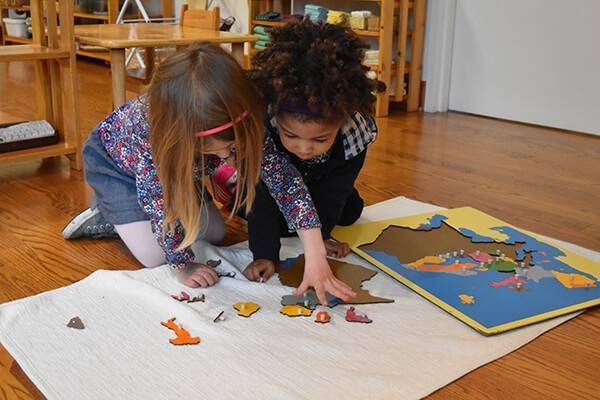
Normalization is one of the most important and most misunderstood terms in the Montessori philosophy. It is an objective of the Montessori curriculum. In fact, some might say it is the highest objective of the curriculum. Dr. Maria Montessori herself wrote, “It is the most important single result of our whole work” (Montessori, 1995, p. 204). The goal of the Montessori environment is to create this outcome. All roads lead to normalization. But what is it? And why does it matter? What is it not? To clear up any confusion, it is important to first address what normalization is not. Normalization does not mean being “normal.” Dr. Montessori wrote that her work was not intended for the creation of a “normal man” (Montessori, 1996, p. 34). It does not mean that children should strive towards societal, cultural, or even familial norms. Normalization is not about trying to make children the same or making them conform to imposed standards. It is not about removing children’s uniqueness or perfecting them towards some ideal. What’s more, it is not anything that adults “do” to children. What is it? Normalization was a phenomenon that Dr. Montessori observed in children who had been working constructively in her environment. It is a positive state of being that the children themselves bring about by their own activity. Dr. Montessori noticed that after a student had engaged in productive work, they emerged peaceful, joyful, and confident. For a period of time, they were free of what she referred to as “deviations,” defined in her own words simply as “the naughtiness of small children” (Montessori, 1996, p. 35). A child who is normalized is helpful and kind. They are disciplined, independent, and accept the limits of living in a community. Their body and mind are fully integrated. It represents a child’s true nature, complete with their uniqueness. Normalized children do not all look and act the same, but they have similar attributes that allow them to lead with their strengths. Dr. Montessori wrote, “One is tempted to say that the children are performing spiritual exercises, having found the path of self-perfectionment and of ascent to the inner heights of the soul” (Montessori, 1995, p. 207). This lofty language refers to the spiritual quality of normalization— the inner development of a child’s best self. How is normalization reached? Normalization is achieved through concentration. Dr. Montessori observed that periods of deep and engaging activity brought children to this state. She wrote “[Normalization] always follows a piece of work done by the hands with real things, work accompanied by mental concentration” (Montessori, 1995, p. 204). After children work, they reveal their true and best nature. But how to encourage this kind of activity?
